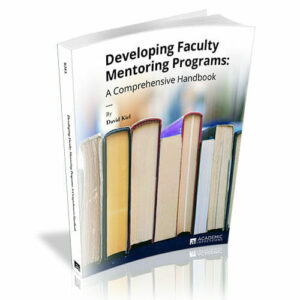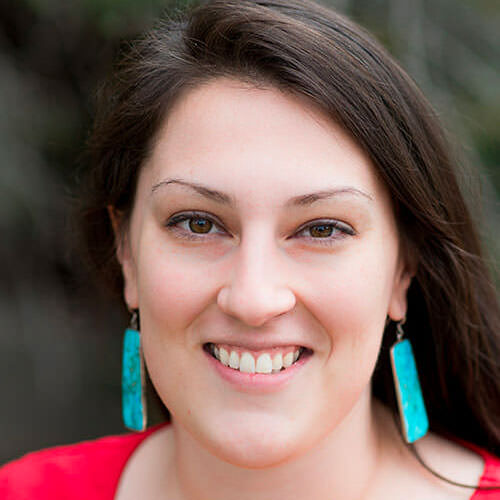
The vast majority of new college and university faculty members receive very little training for their jobs, and often very little training once they have their jobs. How can we support their transition from graduate school to a primarily undergraduate institution (PUI)?
Every year thousands of higher-education faculty members begin a job for which they have had little or no training. According to the Carnegie Classifications of Institutions of Higher Education, over 88% of higher education institutions serve primarily undergraduate students. However, in most disciplines, Ph.D. training programs provide minimal preparation for a career at a teaching-focused institution. The truth is that the vast majority of college and university faculty members receive very little training about how to do their jobs, and often very little training once they have their jobs. This disconnect between the training provided in most Ph.D. programs and the skills necessary to thrive in most careers in higher-education can lead to frustration and job dissatisfaction.
…To explore the ins and outs of this issue, we sat down recently with Mark E. Basham (Regis University) and Pamela I. Ansburg (Metropolitan State University of Denver), who are in the process of writing a book in hopes of easing the graduate school-to-teaching institution transition for first-time faculty members. Here are some of their insights.
_____________________________________________
Let’s frame the issue at hand to get started. What tends to be so difficult for new faculty members who are making the transition from graduate school to a primarily undergraduate institution (PUI) for the first time?
Mark E. Basham, Ph.D., Pamela I. Ansburg, Ph.D. The overwhelming majority of Ph.D. training programs are at large, research-oriented universities and prepare trainees for a career focused on research. However, most academic jobs for people with Ph.D.s are at primarily undergraduate institutions (PUIs) with a broader focus on teaching, advising, service, and research. This creates a disconnect between the training that a person has and the job they are hired to do. Few Ph.D. training programs offer instruction in pedagogy and most trainees get minimal practical experience as an instructor. The teaching assistantships that are common in doctoral training programs are usually limited to grading and some instruction but provide little practice in course development and overall course organization.
Most new faculty members at a teaching-focused institution are shocked by the amount of time required for preparing lectures and other course activities, especially for grading. This is true for adjunct and part-time faculty members as well as for full-time, tenure-track faculty members. Faculty members teaching online or hybrid courses face the additional burden of learning new technologies to deliver their instruction and of managing students’ technical issues. Designing an online course from scratch can take an enormous amount of time to do well. In some cases, those teaching online will be provided with a course shell that is already populated with the course curriculum but teaching such a course still requires significant time to become oriented to a course designed and structured by another person. Regardless of the method, preparing and delivering the course content are only the first steps, assessment of student learning almost always takes up more time than new faculty members anticipate.
In addition to spending time teaching, new full-time faculty members can often be surprised by the time required for student advising. At most PUIs there is an expectation that full-time/tenure-track faculty members will spend significant time meeting with students outside of class during office hours, academic advising appointments, and career discernment meetings. Most departments also have student-centered social and club events that faculty members are expected to attend. These demands on one’s time are completely new to a faculty member coming from a typical doctoral training program. Couple these time-intensive parts of a job at a PUI with research activities and even minimal service commitments, and the job can become overwhelming.
_____________________________________________
What are some examples of things you both wish you had known as new faculty members at PUIs?
Mark E. Basham, Ph.D., Pamela I. Ansburg, Ph.D. We wish that we had known how much time it would take to prepare for each class period. For new faculty members with new course preps, a good rule of thumb is that you will spend 3 hours preparing for every hour that you are in front of students. Grading of student work will often take up another several hours every week. This adds up to a majority of your time spent preparing for teaching and providing student feedback. Even after you have taught a course several times it is easy to get caught up in continuing to try to design the perfect classroom or online experience. It took us a while to realize that there is a point at which additional preparation on the instructor’s part does not translate into additional learning on the student’s part. Finding that sweet spot increases teaching efficiency and effectiveness.
Had we known how much time class preparation would take, we would have been better able to manage our expectations about our research productivity. During doctoral training you devote almost all of your workday to scholarship, and this results in a high level of productivity. At a teaching focused institution, particularly early in your career, it is difficult, if not impossible, to maintain that level of productivity. This is a difficult adjustment to make given that during your doctoral training research productivity was valued over everything else. Successful faculty members at PUIs are able to recalibrate their professional value system to more strongly emphasis teaching and service in comparison to scholarship.
_____________________________________________
What are some practical pieces of advice you would offer to faculty members who are new to teaching at PUIs? What can they proactively be doing or thinking about to set themselves up for success in this new environment, regardless of the support systems that may or may not be in place?
Mark E. Basham, Ph.D., Pamela I. Ansburg, Ph.D. New faculty members should take advantage of available resources. Many textbook publishers offer ancillary materials for faculty including videos, lecture notes, quizzes, supplemental information, and test banks. These can be great time savers. Additionally, more experienced colleagues are often a great source of course materials and tips and tricks. Most PUIs also have an office devoted to supporting teaching (e.g. a Center for Excellence in Teaching and Learning). These offices often offer practical workshops and individual consultations about teaching. New faculty members can also find support for teaching in their disciplines: many disciplines have professional organizations devoted to teaching in that field.
When organizing courses, faculty members should think carefully about the type and number of assessments that they will assign in each class. It is important to design assessments that are thorough and fair and that can be graded and returned within a reasonable time frame. As part of this design, faculty members should also consider staggering major assessment due dates across the courses that they teach.
Before accepting a position at a PUI, a new faculty member should negotiate for a work environment that gives them the best chance for success. New faculty members should request a reduced teaching load, or a teaching load that duplicates course preps. It is much easier to teach two sections of the same course than to prepare for and teach two different courses. Faculty members should ask for reduced advising loads during their first year and minimal service requirements. Another request that new faculty members should make is for a work schedule that affords them dedicated time each week for scholarship. Faculty members should protect this time—just as you would not schedule meetings during your teaching time, you should also not schedule meetings during your scholarship time.
_____________________________________________
Is there any advice you want to offer to graduate students who are nearing the end of their doctorates? Anything they can or should be doing to proactively prepare themselves for this transition?
Mark E. Basham, Ph.D., Pamela I. Ansburg, Ph.D. The two most important pieces of advice that we would give are to set realistic expectations about your career and to acquire teaching experience. Graduate students should talk to faculty members at PUIs about their experiences. Most faculty members at a PUI are happy to have a graduate student shadow them for a day or two. Reaching out to a professor from a graduate student’s own undergraduate institution is a good place to start. Students should also try to get as much teaching experience as they can during their graduate training. Many Ph.D. training programs require graduate students to serve as teaching assistants for a semester or two, but these requirements should really be viewed as the minimum and are not sufficient to prepare a student for a career at a teaching-centered institution. Fortunately, most PUIs, including community colleges, are eager to hire advanced graduate students to teach a course or two each semester. Graduate students should seek out these adjunct, part-time teaching opportunities; balancing the time demands of graduate training and part-time teaching is good practice for a career at a teaching-focused institution.
There are several practical steps that academic leaders can take to ease the transition from a doctoral training program to a job at a PUI. At the time of hiring, administrators should explicitly articulate the institution’s prioritization of teaching relative to service and scholarship. This clarity of mission will provide new faculty members with accurate expectations about the job they are being hired to do. Institutions should develop policies that reduce course loads and number of course preps, and limit advising and service expectations for new faculty hires. Further, the focus on teaching should be integral to the institution’s incentive structure. For example, evaluation guidelines for re-appointment, promotion, and tenure should accurately reflect a PUI’s balance among teaching, service, and scholarship. Additionally, the institution should invite experts to speak to new faculty members about transitioning to a career at a PUI and should provide funding for teaching-focused conferences and webinars. A robust orientation and mentoring program will help new faculty members understand institutional expectations. Finally, institutions should commit resources towards a center for teaching and learning that will support faculty members as they transition to a PUI.
Questions about this article? Are you interested in exploring how you can better support your faculty at various transition points in their careers? Please reach out to the Academic Impressions team via Sarah Seigle Peatman, Senior Research Analyst, at sarah@academicimpressions.com.
Enjoying This Article?
Sign up for our newsletter to get more articles like this one, as well as critical news and trends in higher ed. 98% of our readers say that they regularly forward Higher Ed Impact: Daily Pulse to their colleagues.
_________________________________________
Learn More
 Want a comprehensive handbook for launching or improving faculty mentoring programs for early-career, mid-career, and late-career faculty? Read our book, Developing Faculty Mentoring Programs: A Comprehensive Handbook by David Kiel. This book includes practical strategies from a wide range of institutions, as well as 200+ pages of worksheets, checklists, templates, and both departmental and self-assessments to help you refine your mentoring services.
Want a comprehensive handbook for launching or improving faculty mentoring programs for early-career, mid-career, and late-career faculty? Read our book, Developing Faculty Mentoring Programs: A Comprehensive Handbook by David Kiel. This book includes practical strategies from a wide range of institutions, as well as 200+ pages of worksheets, checklists, templates, and both departmental and self-assessments to help you refine your mentoring services.
Also, we hope to see you at this conference:
Essential Leadership Skills for Academic Deans
March 25 – 27, 2020 | Denver, CO
Check out our on-campus workshop, designed for institutions that are looking to invest in the development and success of their department chairs as leaders and managers:
On-Campus Workshop: Leading and Influencing as a Department Chair


